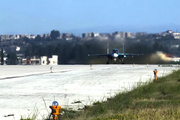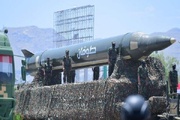The site had been surveyed last May, and the team proposed that the ancient dam be relocated, but new studies show that will be impossible.
“We discussed the issue with Iranian and foreign experts and all of them believe that the use of cutting equipment will result in the collapse of the dam,” team director Mahnaz Sharifi said.
The dam was built using riverbed rounded stones and saruj, a mortar of cement and gypsum used in Sassanid era architecture, and will not be able to withstand the jolts of relocation operations.
“Modern dams are decommissioned after 50 years. Thus, the Sassanid dam can be preserved under the sediment till the modern dam is decommissioned and the Jareh Dam will reappear,” Sharifi explained.
According to the schedule, the new dam is to become operational in the next few years.
The Jareh Dam is one of five dams that were built in the Ramhormoz region during the Sassanid era. It is the most intact of the two surviving Sassanid era dams and is 20 meters in height.
MMS/HG
END
MNA






















Your Comment